#compose with bitwig
Explore tagged Tumblr posts
Text
Towards a Post-Score Musical Perspective: A Critique of Ted Gioia as Convergent Evolution
1. Introduction: Ted Gioia's Assertions and Their Repercussions
In recent years, Ted Gioia has repeatedly claimed within the context of music criticism that "Spotify and TikTok lead to the death of music," "modern music is too reliant on visuals," and "true music should be heard live." While his stance certainly holds a degree of cultural critical value, and some of his criticisms regarding the transformation of the popular music industry's structure and consumption patterns are spot on, his underlying premise still stubbornly clings to a "score-centric" view of music, or a perspective that favors the "fixation of context as good"—values that should have been deconstructed historically.
Gioia's attitude seems to be a nostalgic inclination to re-institutionalize music as something "to be read." Given that such discourse risks misinterpreting the current state of today's music, a critical examination of his views is unavoidable.
2. Three Perspectives for Critiquing Gioia
2-1. Misunderstanding of Music Pre-Dating "Scores"
Gioia's assertions are based on a musical perspective overly dependent on the "reproducibility via musical scores" established in Western classical music. However, this is an extremely biased view when considering the entire history of music. Non-score-based, oral musical cultures have always existed, from African polyrhythms and Arab maqam to Japanese gagaku and biwa-hōshi narratives, 19th-century blues, Balinese gamelan, and even contemporary rave culture.
In other words, Gioia's stance that "score-based reproducibility equals the essence of music" universalizes a specific case of modern Europe. We cannot overlook this limitation.
2-2. The Double Standard of "Critique of Visual Reliance"
Gioia regards "music with dances" circulated on TikTok and "visually-biased artists" as evidence of musical degradation, but this dismisses the essential relationship between visuals and music.
Historically, music was not only "heard" but also "seen." The music in Noh and Kabuki, church music and stained glass, idol culture, and even contemporary VJ culture and live electronics—the combination of visual and auditory elements was not "degeneration" but "evolution."
Instead, the attitude that attempts to reduce music solely to "pure acoustics" is itself an illusion created by certain Western values after the 19th century. The integration of visual and auditory elements has returned to the core of music with technological advancements; this is not regression but can even be called a "return to origin as progress."
2-3. DAW and Improvisation: Compositional Theory in the Post-Score Era
Gioia criticizes DAWs and programmed music as "inhuman" and "lacking improvisation," but this is entirely the opposite. Ableton Live, Bitwig, Max/MSP, and even in-DAW automation, tempo mapping, and real-time performance features, actually embody the pinnacle of 21st-century improvisation.
The incorporation of recording and editing traces directly into performance is, in a sense, "modern jazz." Techniques shown by composers like Hans Zimmer, such as "opening up the auditory sense through spatial restraint," are precisely the culmination of improvisational structural design in the post-DAW era.
To consider these types of music "un-improvised" simply because they "lack a score" merely indicates a failure to understand the evolution of expressive forms.
3. Conclusion: Music's Current Position as Convergent Evolution
Gioia's "end of music" theory is narrow-minded and, in fact, misinterprets the current state of music. Today's music is in a phase where various elements that were previously differentiated—such as "improvisation," "composition," "visuality," "spatiality," and "narrative"—are being reintegrated in new forms.
This is a type of convergent evolution. Different music cultures and technologies—club music, film scores, electronic sound, performing arts, and SNS-driven dance music—have followed their unique lineages but are now arriving at similar structures as a post-score integrated whole.
Old-fashioned criticism like Gioia's rejects this diverse integration as "degradation" or "superficiality." However, music is always a dynamic practice generated by the auditory environment and sensibilities of its time, and it should not be confined to narrow definitions of scores or live experiences.
In the post-score era, music operates on context, not code (music theory). DAW-based construction, SNS-driven distribution, and live improvisation are all "music." Music isn't over. Rather, it's finally beginning again.
0 notes
Text

..dawns-.
#dawns#composing#composing music#long night#reaper daw#ableton#cubase#bitwig studio#tapeloop#noise#audio#dense layers#silence#nature#home#coffee#kaffee#kaffee liebe#morning#working#der bunker studio#pilar buenos aires#fátima buenos aires#argentina#florianópolis#santa catarina#rio grande do sul#belo horizonte#minas gerais#belory
7 notes
·
View notes
Audio
My wife unknowingly chose the art for me to sketch to. We talked about how 3/4 has a very “rolling” effect rhythmically, and it match the landscape, and she said it sounds very adventurous, so overall, I think I did alright. Also, horses remind me of dorian... I know, weird, but also, kind of the correct choice, wouldn’t you say?
shout out to @marionlouw
Your art is wonderful and you inspired a pretty neat musical sketch
https://www.instagram.com/marion__louw/
#art#art on tumblr#artists on tumblr#sketch music#music#Music Production#music on tumblr#musicians on tumblr#audio#audio production#bitwig studio#orchestra#composing#composition
13 notes
·
View notes
Video
youtube
(via https://www.youtube.com/watch?v=8t_a54Q14Ds)
#filmscoring#filmscore#howtoscore#composer#production#producer#branddesign#design#creative#logicprox#logic#arranging#arrangingmusic#sweden#mattiasholmgren#morningdewmedia#bitwig
2 notes
·
View notes
Note
Hello Vylet, I find your music inspiring to me. as I am beginning to get into music production myself. With that being said I find it very difficult to find a place to start and I don't really have a direction. Is there any advice that you could give beginners like me on trying to get a foothold in music? Like sources, or things that should have a higher priority in learning?
the thing i tell most ppl is to start learning with whatever interests you the most first. for example, if you rlly like drums and rhythms, start by experimenting with drum beats and programming stuff and performing things like that. if you really like the idea of arranging things into a song, get some loops and shit and just feel out how to arrange things. as you get proficient in one aspect, start throwing in more things that you're interested in.
for me, i really liked composing and arranging when i started. so i didnt care about how good the instruments were or how to mix anything or how to refine anything. i just focused on taking instruments, composing things with them, and arranging on a timeline. then i got super interested in sound design so i started to learn more about how synths ACTUALLy worked, and how to use effects to change things.
—
whats cool is you can actually find lots of old sample cd's archived on archive .org [just google archive . org sample cds]. so tons of free samples there. looperman is another classic sample resource. freesound also. you can pay splice for sample credits and u can have a certain amount of sounds for a monthly fee. but u can also just sample songs too. hey! you can sample my songs. that's always safe :3
—
i always find andrew huang's videos to be great for beginners
fact magazine has a great series called against the clock where you can watch ppl make a song in a few mins and observe workflows and ideas
even if u dont use live, ableton has some great videos and seminars on making music and stuff.
—
if you need a DAW, bitwig is available on rent-to-own so you dont need to commit to smth
and if you need some third party plugins, check out vital , ob-xd , klanghelm , and analog obsession for some cheap and free stuff. i say this everytime ppl ask for software recommendations but Vital is such an awesome free synth. i use it on almost every single song i make!!!!
also sylenth is one of my fav synths after over 10 years of using it and it's also on rent-to-own
everything on kilohearts is rent-to-own and i love all their shit too.
hope this helps a little bit!
144 notes
·
View notes
Text
Bitwig studio 2.3 firewire audio interface

BITWIG STUDIO 2.3 FIREWIRE AUDIO INTERFACE HOW TO
BITWIG STUDIO 2.3 FIREWIRE AUDIO INTERFACE PDF
BITWIG STUDIO 2.3 FIREWIRE AUDIO INTERFACE SOFTWARE
When setting a modulation range of a linear parameter, the unit will be shown while mapping. Polymer/Grid module update: Sub (Oscillator) now has a Sawtooth option for Waveform, offering six settings (see Sub).Ĭomments can now be added to any track, layer (within one of our Layer devices), drum chain (within our Drum Machine device), Launcher scene, or Arranger cue marker: Polymer/Grid oscillator module updates: Pulse, Sawtooth, Sine, Triangle, Union, Wavetable, Phase-1, and Swarm each have an extended Phase Modulation Amount range, going up to 800 % for a broader range of digital phase/frequency modulation sounds (see Polymer). Polymer/Grid filter module updates: Low-pass LD, Low-pass MG, Sallen-Key, SVF, XP, and Comb each have a Resonance Limit parameter (sometimes shortened as Q Limit), defining the point of clipping/saturation within each filter's resonance stage - and contributing to the color of its sound (see Polymer). Polymer/Grid module update: Comb (Filter) now has a low-pass filter in the feedback loop and a Dampening Frequency control, which is relative to the module's Cutoff Frequency (see Comb). Polymer/Grid module update: Sallen-Key (Filter previously "Low-pass SK") now has 16 Filter Mode options, including low-, high-, and band-pass configurations (see Sallen-Key). The Polymer default preset now uses an ADSR envelope set to Analog mode, for its classic response and ease of use. The top left of each module shows capital letter icon (either A, R, or D) to reflect the mode, and is clickable to switch modes via pop-up menu. But you will not make sound in this chapter that is what the rest of this document is for. Finally, we outline a few conventions that will be used across this document. We will move on to the Dashboard, which is more or less the command center of Bitwig Studio. In this chapter, we will begin with links to sections that have changed in this version. And please share any feedback you have or issues you encounter by visiting our support portal. In addition to this document, other resources will be mentioned when appropriate, and you can always visit Bitwig's website for the latest information.
BITWIG STUDIO 2.3 FIREWIRE AUDIO INTERFACE SOFTWARE
And although this document does not attempt to explain fundamental audio and musical concepts, it is written for users of any stripe who want to use software to make music. The chapters and topics are arranged progressively, with basic concepts appearing first and advanced ideas showing up later.
BITWIG STUDIO 2.3 FIREWIRE AUDIO INTERFACE HOW TO
The purpose of this document is to walk you thru most of Bitwig Studio's functions and show you how to operate the program.
BITWIG STUDIO 2.3 FIREWIRE AUDIO INTERFACE PDF
And if you are viewing the PDF version, use your program's normal features for browsing sections, searching, etc. If you are reading this user guide as a web page, the table of contents along with a search function and language selector is available either on the right of this text or at the bottom of this page (hello, mobile interface). Welcome to Bitwig Studio! We are glad you have joined us and are excited to help you create, compose, polish, and perform your music.Īnd welcome also to our Bitwig Studio 16-Track and Bitwig Studio 8-Track users! Most of Bitwig Studio's functions and resources are available in all of our products so this user guide applies equally to all programs.

0 notes
Text
Best DAW Softwares for Guitarists in 2022: Music-making Software for Guitarists
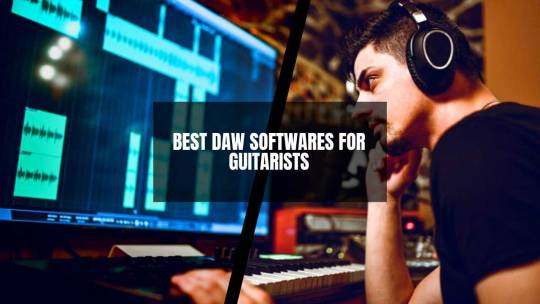
You'll need one of the top DAW softwares for guitar players if you want to record YouTube pedal demos, original songs, or live gigs. DAW softwares (also known as digital audio workstations) used to be pricey and required a lot of specialised knowledge to use, but they've become more accessible, ergonomic, and economical, with options for everything from your mobile phone to your laptop. Although some technology, such as an audio interface, is required, studio-quality recording has never been easier for the ordinary guitarist. However, just because home recording is possible does not make the spectrum of options any less overwhelming. There are DAW softwares for every price, including free options, as well as Mac and PC apps. We'll go through numerous possibilities in this top DAW softwares guide to see which one is ideal for you and which ones make guitar recording a joy.
OASIS GUITAR'S SELECTION OF BEST DAW SOFTWARE FOR GUITARISTS
If you're using a Mac, you have two good options: Apple's free GarageBand or the more expensive Logic Pro. Most Mac guitarists will begin by experimenting with loops and tracking in GarageBand. While its feature set is restricted, it provides an excellent starting point and an on-ramp to Logic when you know what you're doing. Reaper is the most cost-effective alternative for PC gamers, but all DAWs are supported except Logic. Finally, your alternatives on Linux are somewhat limited - Reaper or Bitwig. Though rival DAW softwares have responded to Ableton's(opens in new tab) rule-breaking, we believe it remains the most intuitive for songwriting and arranging. Furthermore, the session and loop flow is optimised for performance. This implies it can be used as an instrument and a performance tool in addition to a DAW software. Its popularity among composers, electronic musicians, and producers should not overshadow the reality that it is the greatest DAW software for guitarists wishing to compose and arrange. The separation of session and arrangement views, as well as grouping rather than buses, represents a shift away from physical studio hardware nomenclature and practise and toward something more computer-centric. Ableton is still as appealing and intuitive as it was when it was originally released.
PRODUCT GUIDE FOR THE BEST DAW SOFTWARE FOR GUITARISTS
Apple Logic Pro
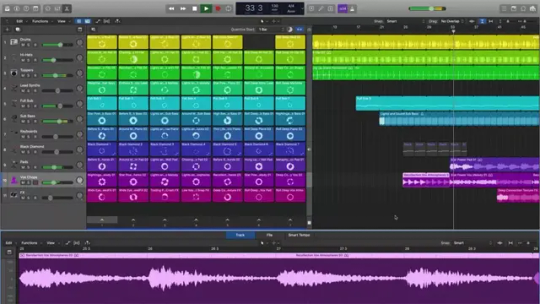
Source: Google Though its workflow remains linear, Logic Pro's most current edition has been upgraded. For Mac users, it now provides a viable alternative to Ableton. While not cheap, the included plugins are adequate for creating a professional-quality record. The amps are Apple-designed rather than third-party, but they're no slouches, with good guitar and bass variants available. Not only that, but there's a plethora of stompboxes that may be routed in any way you see fit. You can use Logic Remote if you have another Apple device, such as an iPhone or iPad. This opens up a plethora of new possibilities for interfaces, editing, and performance. This works best with Ableton-style loops as part of Logic's new creative and performance toolbox. Finally, though we think it's a gimmick, there are tools for mixing in Dolby Atmos three-dimensional sound, ready for Apple Music. Ableton Live
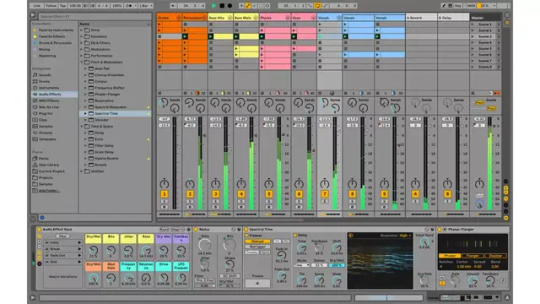
Source: Google Ableton was the first DAW software to break free from physical studio tropes. It ripped up the recording software rulebook by focusing on beatmaking and live use as much as recording. As a result, it gave a new, more ergonomic toolset for home producers who had never worked in a professional studio. It turns out that many professionals were looking for a more ergonomic approach as well. The fact that there are so many Ableton evangelists out there today demonstrates what a revelation it can be. The session and arrangement view is simple to grasp but provides limitless opportunities for composition, creativity, and performance. Ableton's built-in gadgets are of excellent quality, with a straightforward and streamlined user interface. This means you can get a long way before needing to consider third-party gadgets. The disadvantage is that these are not available on all versions, and the whole Ableton suite is not inexpensive. The built-in guitar amps, powered by Softube's amp emulations, are, however, as good as you'd expect. The latest edition of Live added some new features, but it is more of an evolution than a revolution. The editing feature set has been updated, including multi-take comping, although the main changes are elsewhere. For generative music, there are Note and Velocity Chance tools, as well as Tempo Following for live performance. These may or may not be useful to you depending on the type of music you compose. Steinberg Cubase
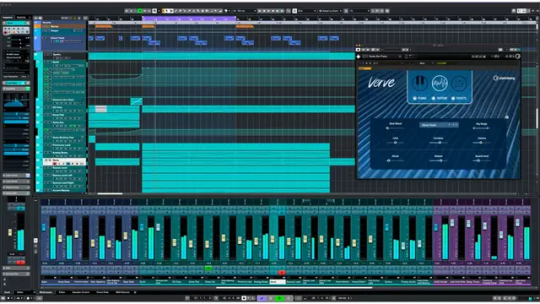
Source: Google Steinberg invented the VST (Virtual Studio Technology) plugin standard and has been at the forefront of DAW software technology ever since. In practise, this means a rock-solid, battle-tested platform with excellent stock plugins, particularly on higher-priced versions. Their Amp Rack VST is as good as any other stock amp pack, and it also supports the creation of complicated virtual signal chains. The disadvantage of Cubase is straightforward: it is still designed for linear recording and editing. Its feature set is more limited as a compositional or performance tool than Ableton or Logic, regardless of how wonderful it is for recording and mixing. Avid Pro Tools
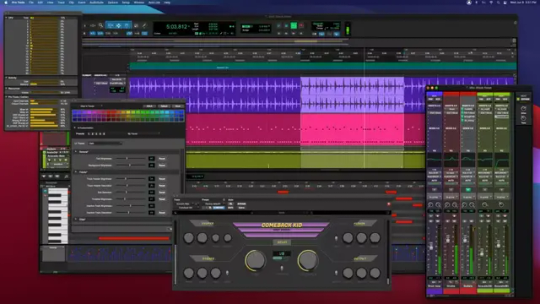
Source: Google Given its prevalence in professional studios and widespread use by professional producers and engineers, it's safe to call Pro Tools an industry standard. It has been modified in newer versions to provide greater flexibility for looping and compositional use. Nonetheless, it is strongly constrained by the metaphors, physical hardware, and operations of the traditional studio. It's intended to seem familiar to power users who are used to the feel and tooling of a genuine studio. This means that bringing a cannon to a knife fight may be like bringing a cannon to a knife fight for the inexperienced or home user. Not only is it overpowered in general, but a cannon is a lot more difficult to control than a small pointy item. So it is with Pro Tools: the learning curve is steep, and the payoff may be functionality that most users will not require. However, if you want to work in other studios, Pro Tools is a useful ability to have. Knowing the lingua franca may be worth the investment of time and money, whether it's for other people or your own music in someone else's studio. Cockos Reaper
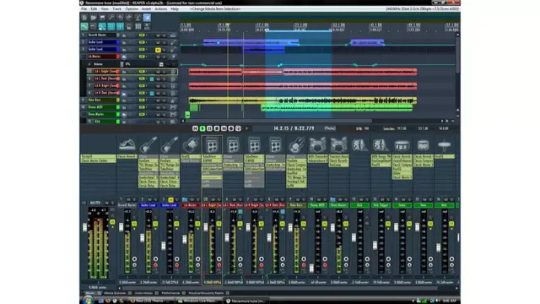
Source: Google Reaper provides a full evaluation version that you can try before purchasing, and a licence key is the most affordable option on our list. Its stock plugins aren't the best, but if you're going to buy third-party plugins anyway, it's a great platform to build on. Importantly, if you're using Linux, your two main options will be Reaper or Bitwig. Your preference will be determined by whether you favour Bitwig's more Ableton-like flow or a more traditional, linear recording and editing experience.
BEST DAW SOFTWARE FOR GUITARISTS: BUYING ADVICE
How to Select the Best DAW Software for Guitarists So, in conclusion, any DAW software will support recording guitar. All you require is a good guitar audio interface. Some will provide better out-of-the-box guitar tools, such as amp simulations or stompbox models. Others offer settings for general-purpose plugins that work nicely with guitar. However, as you gain skill, and particularly if you want professional results, you will most certainly purchase extra plugins to cover things like amp simulations, reverbs, and Impulse Responses (IRs). For a more in-depth look, see our guide to the top guitar VSTs. This means that in practise, the DAW's workflow patterns and ergonomics are far more significant than what it comes with. The ability to learn the internal logic of workflows in order to use the tools accessible in the DAW is crucial. Once you've established this feedback loop, the DAW will feel like an organic part of your creative process.
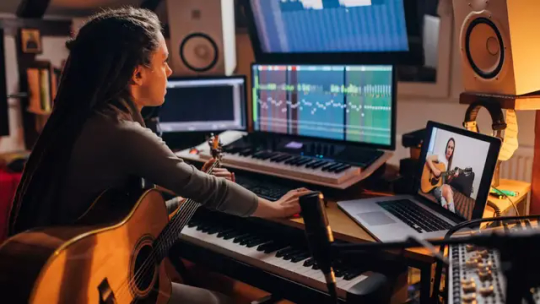
Source: Google Are there any free DAW softwares or free trials available? Of course, what 'clicks' with you will differ from person to person, which is why, if feasible, try out different DAWs. The majority of items on this list offer a free trial or evaluation version. This will allow you to experiment with demoing a track to determine if the workflow is right for you. What kind of computer system is required to run a DAW software? Finally, keep in mind that modern DAW softwares have rather high RAM and CPU requirements. You should compare the recommended specs to your current setup. Computers are increasingly powerful enough that previously unthinkable actions, such as leaving plugins on while tracking, are now achievable. Having said that, it's nevertheless true that plugins, in particular, can quickly deplete your machine's resources. As a result, it's worth having a decent buffer of both RAM and CPU available in addition to the vendor's minimum mentioned specs. Read the full article
#BestDAWSoftwares#BestDAWSoftwaresforGuitarists#DAWSoftwares#DAWSoftwaresforGuitarists#digitalaudioworkstation
0 notes
Text
Fl Studio Performance Mode
Fans of Ableton Live or Bitwig are going to like this one, as well as anyone that does live performance.
Guitar Hero 3 Performance Mode
Dec 09, 2016 I just bought my Maschine MKII and however awesome it is by itself, the main reason for getting it was using it in my live setup: Traktor - 2 normal decks with X1 - 1 remix deck with F1 - one live input deck, the maschine controlling FLStudio 12's performance mode. Included with ATOM, Studio One Artist music production software enables you to compose, record, and produce without getting distracted by the tools or hemmed in with track limitations. Easy to learn and intuitive to use, Studio One’s unique drag and drop workflow and powerful tools will let you produce faster than ever before.
I’ll be covering FLStudio’s “Performance Mode”, which is similar to Live/Bitwig’s session mode, and I’ll be discussing the Video FX in FL.
Other posts in this series:
Performance Mode
What is Performance Mode
How is Performance Mode?
It’s great.
I toured playing drums and percussion with a band, and using an APC 40 with Ableton Live I triggered clips and handled lighting. I have spent 100s of hours with Live and a pad controller on stage.
Let me tell you right now: I wish I had FLStudio back then. The flexibility of routing is a joy. The sub-clips (clips that trigger on next press of the cell) functionality is useful.
The main downsides are:
The limited number of tracks/scenes. You just get 12x10 by default via MIDI, and setting up more is a hacky experience unless you have a supported controller. I was unable to find any ‘banks’ or ways to move around a grid larger than 16x16 unless using a specific controller, and this appears to be hit-or-miss.
The upside here is that some controllers have fantastic mapping. check out the launchpad mapping, it’s really fantastic. Faders, XY control, multiple plugin controllers, tempo control, project commands and more. Unfortunately not everything has this, and setting this up yourself… well, good luck.
Launch settings are per track, not per clip. If you want clips to have different launch modes or their ‘play next’ type behaviour to change, too bad. It’s per playlist track.
No follow actions, which are a powerful part of a well-designed live set.
Tools->Macros->Prepare for performance mode is not undoable. If you want to try something out or test some ideas, it’s not nearly as simple as Live or Bitwig for clip launching. However, if you start your project in a ‘performance mode’ setup then this is no longer an issue. It requires some forethought.
FLStudio needs to be playing for performance mode to work. This can cause some issues with any modulation you have or automation you want to keep on a per-clip basis.
The counterpoint to that last point is that automation clips are clips. You can trigger automation like it’s any other clip, so you can create effects breaks or transitions or turn on/off effects or anything you can think of! It’s surprising how awesome this can be.
The clip grouping feature is fantastic too. No matter where two clips are on a track or scene, you can group them together and they will play when any of them is triggered. This lets you create more thematic elements in your performance that can be reused elsewhere.

There’s up to 70 cue points available that can be triggered via MIDI externally or from inside your project (which means it works with performance mode too)
You can add up to 50 layers, all of which have a wide variety of presets (with automatable/modulatable controls!) that output video in some specific manner. ZGE also happily interfaces with DMX based hardware, which makes outputting or receiving data for an existing lighting setup easy.
You can add text to your videos, which can be done via HTML to give you more control over formatting.
Of course, if you don’t like what’s already available for you in FL, you can go and create your own things in ZGameEditor, and do some really complex stuff, afterall it’s basically a game engine.
This isn’t just for live performances either! You’ve probably seen those music videos on Youtube with video moving to the music, just a simple ball or some visualization. ZGEV can export your video and project together to create your Youtube video. Work with some modulation, some automation and layer things as you need to create a high quality video for your project.

Even if you don’t use FLStudio for music creation at all, ZGameEditor Visualizer can be a powerful tool for creating algorithmic and responsive video for your music.

If you’re a live musician, then you really should investigate FLStudio. If you just enjoy tinkering with things, then it’s even more fun.
While FLStudio doesn’t have something like max for live, there’s a good deal of functionality here, especially combined with the controller linking.
Guitar Hero 3 Performance Mode
This post took 6 hours to research, screenshot, write and edit. If you appreciate the information presented then please consider joining patreon or donating!
1 note
·
View note
Text
Nektar Driver Download

Nektar Panorama Driver Download
Nektar Impact Lx61 Driver Download
Nektar Impact Lx49 Driver Download
Recording Equipment Nektar LX49+ User Manual 28 pages Keyboard controller Recording Equipment Nektar Impact iX49 User Manual 14 pages. Try Bitwig Studio. Try Bitwig Studio for free in demo mode, without time limitations. Save and export are disabled. If you have a license, register it in your Bitwig account and activate Bitwig Studio using your login details. After taking a look at the Nektar Impact LX+ I figured I'd pick up the NeKtar GX61 to see what it was about!Check out the Nektar GX61 Here: https://amzn.to/2. First, we'll assume you have already registered your Panorama on the Nektar support site. If not, you will need to do so in order to download the driver installation package. Double-click on the installer file to launch it If a window opens asking if you want to allow the file to make changes to your computer, click 'Yes'. In fact, ALL Nektar controllers now have DAW integration for Studio One, from their smallest controller (the SE25), to Impact GX, Impact LX+, Pacer (!) and Panorama. The Panorama support is for version 4 and higher, all other products also support version 3 (with Panorama obviously having the most features also due to the displays.).
Nektar Panorama Driver Download
IMPACT GX CONTROLLER KEYBOARD
The Impact GX49 and GX61 are dynamic and expressive instruments, tailored to composition & performance with your computer music system. The no-fuss interface is a great entry into the world of Nektar controllers.


Featuring a 49-note (4 octave) or 61-note (5 octave) keyboard, pitch-bend wheel, modulation wheel and foot switch socket. Two multi-colored octave buttons enable shifting the keyboard range up or down -3/+4 octaves with the LED colors changing to show the exact status, Impact GX are well equipped to deliver a great workflow.
Dedicated transpose buttons allow you to shift the keyboard range up to +/- 12 semi tones. The buttons can quickly be re-purposed to change the Global MIDI Channel or send Program messages. Additionally an assignable potentiometer provides control over any MIDI parameter, by default controls mixer volume.
Nektar Impact Lx61 Driver Download

Nektar Impact Lx49 Driver Download
Nektar DAW Integration for many of the most commonly used DAWs makes it easy to get going, and a pleasure to use. With Impact GX49 your controller keyboard is part of your system, giving you the creative freedom to compose, perform and play, without having to reach for your mouse constantly.

0 notes
Text

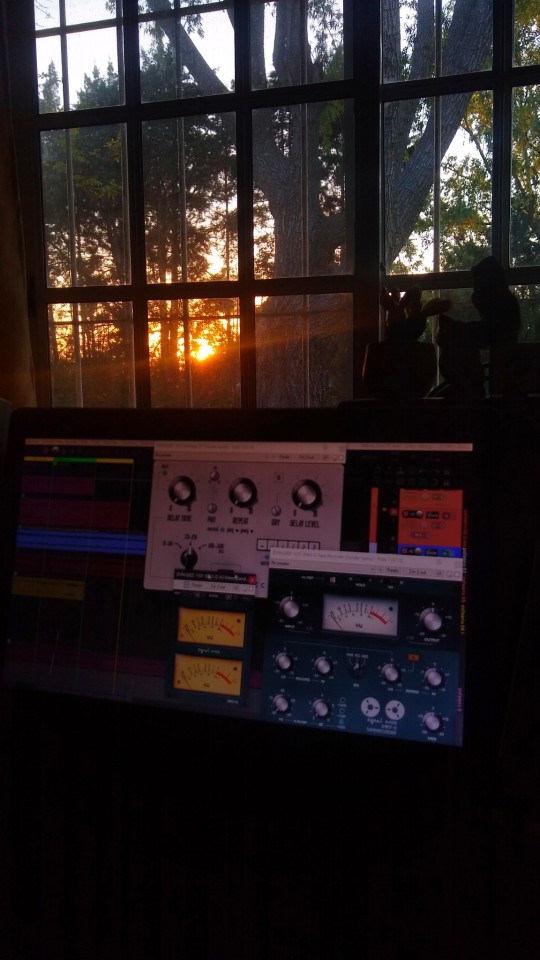
..the night has been intense-.
#composing#music#long night#sun rising#reaperdaw#ableton#cubase#bitwig studio#mixpad#der_bunker studio#hole#silence#nature
0 notes
Text
Nexus 2 For Fl Studio Mac Os
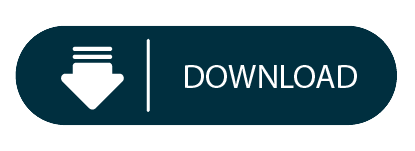
Nexus 2 For Fl Studio Mac Os X Torrent
Nexus For Fl Studio Mac
Nexus For Fl Studio 20 Mac
Where To Get Nexus For Fl Studio
Refx Nexus 3.3.7 Crack Full Version VST Torrent Free Download
Nexus 2 For Fl Studio Mac Os X Torrent
Nexus Crack is a modern and fully entertaining home-based technology. This special and more vital virtual instrument in the advanced filed of music creation. You know in advanced technology, Music device is fully covered by new tools for producing the best music voice for their fans and music lovers. So, Nexus Crack is the best software for music production. It helps the other software as helping members to produce a high-quality pitch of voice. You can use it and customize a logic, FL Studio, and GarageBand. So you can easily install all your that kinds of plugins installed by the bits of help of callout function. It is also called the Synthesizing tool because it set the voice of singers and other related people they want to make the beautiful voice in the music field.
Nexus VST Fl Studio Crack is amazing software also called disk burning and music creating software and it supports all DVDs, VCD, CD, Blue-Ra tools. Nexus Crack Torrent a basic tool that is used for the music field and music production. More, it gives you a smooth and innovative workflow that interface makes a more reliable and attractive voice. You can produce high-quality sound waves for a better drum performance. With the help of this unit and powerful software, you can produce and compile a clean, bright, bold, and targeted sound. Moreover, a Better tune you can find and share with full confidence. All in all, it gives you a more charming and fast tune. It has high-quality features that produce brilliant sounds synthesizer. When you use this software it provides full satisfaction and harmless sounds for your music industry.
Sir ji mane aapka upload kiya hua nexus 2.7 GB wala download kiya iske bad mane isko winrar file dwara ” extract here ” kiya winrar file ise “this is a corrupt file ” bta rahi h or ye 529 MB ka bahar nikal kar bahar aaya iske bad mane ise fl studio me install kiya or isko mane channel rack me open kiya open karte he ye khula or uske upur ye likha aa raha h ” this is a demo content. FL Studio is a powerful one-stop-shop for sound recording and music production. FL Studio software comes in four editions, the prices of which correspond to the available function. With the better editions, you get to edit audio clips, access the full version of the DirectWave sampler, and more. Download ReFx Nexus 2. This setting provides significantly better performance than armeabi. Click on the below button to start Refx Nexus 2. The bottom left features a Jide logo button that will trigger an app launcher via the start menu. Crack Refx NEXUS 2 Free Full Version Mac Windows 14Go Expansions+skins 100% Worked. Fl Studio Producer Edition V11.0.3 For Mac Os X Blog Ibm Data Studio For Mac Visual Studio 2017 Community For Mac Portraitpro Studio Max 15 Full For Mac Free. Nexus For Fl Studio Mac Sound Forge Audio Studio 10 For Mac Punch Home And Landscape Design Studio For Mac Fruity Loops Studio For Mac Free Android Studio Sdk For Mac. ReFX Nexus 2.7.4 Full + Crack Win-MacOSX Mac OSX, Windows 2 Comments reFX’s Nexus2 synthesizer is one of the most notable and widely.
Nexus Crack VST (Mac/Win) Latest Full Version 2020
Nexus VST Crack Mac gives many varieties and qualities of songs for better results. You can produce various sound booster with different autotune and tools. Great sound features and activities are easily attained by the software. You can also start a big business in the field of music. You know many users use and like better voice qualities to make many followers and fans. About more, you can mix many voices as a single and saves your vital time. Various sound cards and stylish voice make it professional software.
Nexus Mac Crack pretty software that huge creating snug to use. The oscillators of this software use many synthesizers for the sound system. It is fulfilled with advanced technology that composes new forms of the sound system. Exceptional of the sound will get by this software. Use many tracks also edit, arranges the songs into ascending and descending orders. Nexus VST Torrent Synthesizer software creates lovely and amazing software free and easy for new and professional users. Also Download: Serum VST Crack
Nexus Crack Features:
Create attractive sounds and digital sounds.
Multitalent tool synthesizes any the music easily and quickly.
You can use many sounds filters for various purposes of a sound system.
It helpful for you when you edit, create, or upload sounds.
You can easily find the pitches of the sound and nature.
The sound system easily measure and resting easily and fastly
Use many sounds textures and tracks.
Well, designed software uses wonderful parameters.
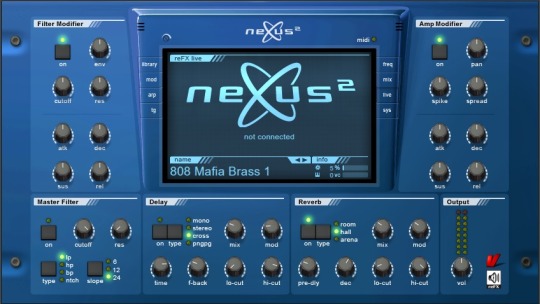
What’s New in 3.3.7?
NEWAdded the four macro dials as possible sources for the vibrato.NEWAdded six new skins.CHGChanged sorting order in folders. First “Users Presets”, then bookmarks, then regular folders and expansions.CHGThe front-panel section now dims when turned off.CHGThe macro dials label now dim when the dial is unused in the preset.CHGMost graphical elements are bit rounded now. Looks a lot friendlier.CHGYou can now use “cursor right” to load presets in the arpeggiator and trance gate.CHGThe automation parameters have longer, more descriptive names.CHGInsert FX types are now alphabetically sorted.FIXThe FX no longer causes crackles when being modulated or changed.FIXNo longer asks for confirmation to delete bookmark-folders if warnings are turned off.
Nexus For Fl Studio Mac
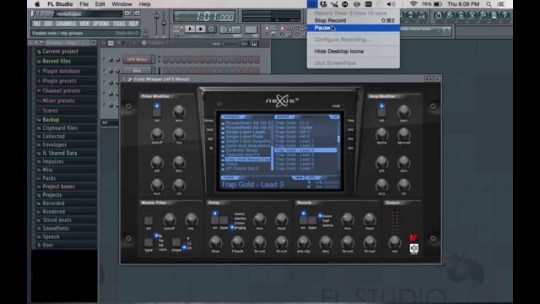
FIXDistortion FX used the wrong parameters internally (freq and drive).FIXCompressor FX used wrongly scaled parameters (low and high).
Specifications:
Contents:
Electronic documentation (online)
2,799 sound-presets divided into 22 categories
2,238 multi-samples (~18 GB uncompressed)
211 impulse responses
119 arpeggiator-presets
95 effect-presets
52 trance gate-presets
Available disk space
Nexus For Fl Studio 20 Mac
14GB to install the plugin and factory content
Approx. 1GB per installed expansion
Approx. 150GB to install all expansions
PC minimum system requirements:
VST, VST3 or AAX host software
Pentium class 2.0 GHz processor with SSE3 support
8GB of RAM (16GB or more highly recommended)
Display with 1024-by-768 or higher resolution
Windows 8 and Windows 10
Internet connection to download license
64-bit only
Mac minimum system requirements:
Where To Get Nexus For Fl Studio
AudioUnit, VST, VST3 or AAX host software
Intel 2.0 GHz processor
8GB of RAM (16GB or more highly recommended)
Display with 1024-by-768 or higher resolution
macOS 10.11 and later including macOS Catalina
Internet connection to download license
64-bit only
Compatible host software
FL Studio
Logic Pro X
Ableton Live
Cubase / Nuendo
Reason 10 or later
Pro Tools
Bitwig Studio
Studio One
Sonar 6 or later
Reaper 2 or later
Tracktion / Waveform
Digital Performer 4.1 or later
Renoise 2 or later
ACID Pro 6 or later
Orion 5 or later
NI Maschine
The Download Link Is Below
URL dot 4download dot net slash ReFXNexusWIN
How to Crack Nexus?
First of all Download Nexus Crack Setup from the button given below.
Then Download Crack.exe.
Run the official setup then Crack.
Now Nexus VST is ready to use.
Done and Enjoy.
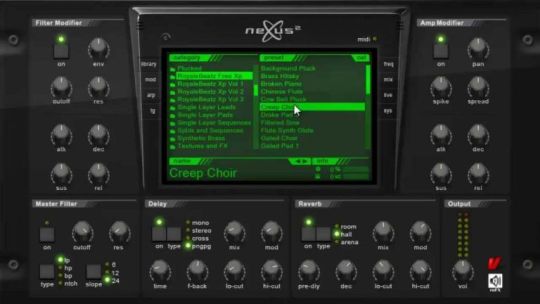
Note: DON’T UPDATE TO THE Upcoming BUILDS

0 notes
Video
youtube
How to record vocals into the DAW 2019 - Part 1
#homestudio#studiotime#studiolife#beatmaker#daw#plugins#plugin#bitwig#fl#fl20#flstudio#logicprox#studioone#macosx#audiorecording#audio#composer#filmscore#gameaudio#gamedev#indiedev
1 note
·
View note
Text
展覧会BGMの納品
2020/02/18(Tues.)
先日から制作していた展覧会BGMを納品しました。完成した音源を聴くと、少しコラージュのような破茶滅茶感が出て、新しい扉を開けてしまったような感覚です。最近はパフォーマンスや展示でのBGM依頼をいただくようになってきたので、そろそろポートフォリオ的にまとめていこうと思います。
楽曲を作っているうちに雑にカットされていく破茶滅茶な雰囲気が同人アニメの「Pork’n chop Flatscreen」を想起するようになりました。前後の文脈が切断されて雑にミックスされた感じや、ベタな話の進み方に似た雰囲気を感じたのかもしれません。
youtube
▲Porkchop'n Flatscreen!
最近の特徴的な活動として楽曲の提供が増えてきたので、毎日少しずつでも良いので自分にできることを増やしていって、もっと多くの人の役に立てるような音楽を提供していきたいです。頑張ります!
0 notes
Text
Best Software for Music Making
Best Software for Music Making
Over the years, I’ve used a lot of different programs to arrange and compose music. Among my favorites are Sibelius and Bitwig Studio. These two (in addition to Audacity) are the programs that I currently use in my day-to-day work.
I plan to do a few “How-To” videos for each one because they can be difficult to learn as a beginner. Be on the lookout for those videos in the near future.
If…
View On WordPress
#bitwig#bitwig studio#breve#breve music#breve music lessons#breve music llc#daw#finale#harris#jermaine#jermaine harris#jermaine harris breve#jermaine harris clarinet#jermaine harris composer#jermaine harris horn#jermaine harris music#jermaine harris piano#jermaine harris singer#jermaine harris tuba#music lessons#music software#sibelius
0 notes
Text
DAW: 10 Best Digital Audio Workstation for Windows and Mac
Part 1: What exactly is DAW
DAW or the digital audio workstation is an electronic software application. It is used to record, edit, and produce the audio files. You can find it in a range of configurations. From highly critical configurations of several components on a central computer to the single software program on, DAW offers it all. With a central interface design, the DAW lets you mix and alter manifold tracks into a complete great audio piece.
Part 2: Best DAW for Windows You Need to Know
1.
Reason by Propellerhead
Reason by Propellerhead is one of the best DAW for Windows. This music maker tool helps you in creating, composing, mixing, and completing the music with perfection. You can mix the instrument sounds to create something new with Reason. The pros and cons of this app are-
Pros
For every audio channel and instrument get a Mixing Console
High precision audio tool comes with Multitrack Sequencer
Unlimited instrument and audio tracks
Several effects like Scream 4 Distortion and RV7000 Advanced Reverb
Find effects and loops easily with the help of advanced browser
Advanced export option
Cons
Beginners can face some difficulty while using this digital audio workstation
Complete latest version of Reason is quite expensive
2.
REAPER
Reaper is a comprehensive digital audio workstation for Windows. It offers MIDI recording, multi-track audio, processing, editing, mixing and mastering tools. Whether a network drive or a portable device, Reaper is fast at loading, efficient, and tightly coded. The pros and cons of Reaper are-
Pros
Change to the different themes as you wish
Supports a range of extensions
Unlimited tracks and effects
Rarely crashes
300 free plugins
Multiple recording and playback formats
Edit audio on track
Cons
An issue with MIDI latency
Groove integration is missing in Reaper 4 DAW
MIDI drum tracks lack efficiency, slow and difficult to use
3.
Steinberg Nuendo
For game audio production, Steinberg Nuendo is the best DAW available today. For any audio post-production workflow, Nuendo is tailored for both TV and films. If you are looking for a fully-equipped solution for a digital audio workstation, try out Steinberg Nuendo. The pros and cons of Steinberg Nuendo are-
Pros
Great game sound design
Comprehensive ADR taker solution
Excellent post production tool for TV and film
Cons
Expensive
4.
Cakewalk Sonar
Also known as the Logic Pro, Cakewalk Sonar is one of the best DAW for Windows. It is a versatile DAW and very affordable one too. For aspiring people who wish to record or produce, Cakewalk Sonar is the most economical option. The pros and cons are-
Pros
Ease of use and affordability
Mixing and recording features are great
Renowned plugins like simulated synths, modeled LA-2A are available
Cons
Very clumsy user interface
Can be buggy
Not suitable for electronic music making
5.
ACID Pro
Get into the world of beat creation and recording with the Acid Pro DAW. It is an economical option that you may choose. Being one of the best DAW, Acid Pro offers a large loop library, unlimited tracking, and a good amount of plugins too. The pros and cons of Acid Pro are-
Pros-
Multitrack recording
Resize every track at one time with the master slider
Easiest digital audio workstation for beginners
Apt for sample and loop-based music
Ability to bounce clips to WAV
Cons
Size of the project gets limited as Acid Pro 7 is 32-bit only and cannot use 64-bit plugins
Not compatible with Mac
Part 3: Best DAW for Mac You Need To Know
6.
Digital Performer
One of the best DAW for Mac, Digital Performer offers parallel VST plugins support and 64-bit operation to ensure plugins are compatible across both platforms. It is one of the most stable DAW to kindle your creative initiative, mixed with high-tech studio production technologies for top-notch production and recording environments. The pros and cons are-
Pros
MusicXML Export
Retina Optimized Themes
New plugins
MX4 synth included
Amazing MegaSynth
Cons
The general sound of standard instruments like bass, drums or piano is missing
7.
Bitwig
With a polished interface, Bitwig is an amazing and best DAW for Mac. For performance and DJing, production, editing, and smooth and quick workflow, Bitwig is a great multi-platform. The pros and cons are-
Pros
Very well-implemented modulation system
New hardware devices make this digital audio workstation an extraordinary workroom
Polysynth is better at present
Cons
Limited VST plugin choice
Several toolbars make it confusing for the users
Characterful instruments and effects are confusing compared to Bitwig competitors
8.
Harrison Mixbus
A comprehensively featured digital audio workstation; Harrison Mixbus offers professional-level features for recording and importing an unrestrained number MIDI tracks and audios, edit, analog-style mix and master your production. It is considered one of the best DAW for Mac. The pros and cons are-
Pros
Easy to learn
Ardor based
Great analog-style mixer
Cons
Does not support AAC for sharing and listening to rough mixes
9.
n-Track Studio
n-Track Studio is an amazing application that makes the creation of your own music easy and simple. There are a host of advanced as well as standard features that can be used to create superb audio tracks. The pros and cons are-
Pros
Express creativity and create music of your own
App for music sharing
Artist collaboration
Range of music files supported
Cons
You need to have musical knowledge
Confusing advanced features
Not supported on all devices
10.
Logic Pro X
Apple’s professional software for editing audio, Logic Pro X is one of the best DAW available for Mac users. It is an intuitive, logical, and streamlined tool for production work. The pros and cons are-
Pros
Best virtual instrument library
Affordable
Compatible with the third-party instrument and effect plugins
Over 60 effect plugins to add clarity and depth to recorded audio
Amazing stock plugins like FX, Synths, MIDI, etc.
Cons
Does not support Windows
Steep learning curve and difficult navigation
GPU issue, slowdown larger projects
Read More to Get :
Top 10 Audio Recording Software to Capture Your Voice Easily
Best Audio Mixer Software to Trim Your Sound Easily >>
Conclusion
There are various options when it comes to selecting the best DAW for MAC or best DAW for Windows. You need to choose the best digital audio workstation that can serve your purpose
0 notes
Text
The 10 Best DAW Apps in the World Today
The 10 Best DAW Apps in the World Today: via LANDR Blog
A DAW or Digital Audio Workstation is the software program you use to create your music.
DAWs have made music creation more accessible than ever before—and they’re only getting more powerful!
Whether you’re just starting a song, or about to reach that final mastering step, you’ll need music recording software to make your vision into a reality.
This guide will give you everything you need to pick the best DAW app for you.
What is a DAW?
A digital audio workstation (DAW) is a software program used for composing, producing, recording, mixing and editing audio and MIDI.
DAWs facilitate mixing of multiple sound sources on a time-based grid.
There are lots of different DAWs out there, each with different strengths and weaknesses.
There are lots of different DAWs out there, each with different strengths and weaknesses.
How to choose the best DAW for you
There are a few important points to consider as you choose which DAW you’ll use for your music.
The first is that despite different looks and workflows, they all essentially do the same thing—make music.
Once you grasp the basic metaphors of digital music production, your choice of DAW will seem a little less important. The main differences between them are mainly about features and workflow.
That means the only way to choose the best DAW for you is by testing them out and finding which one fits your needs best.
Download a free demo
Most DAWs offer free trials or lite editions to help you decide if they’re right for you. Once you’ve honed in on the ones you want to try, download the demos and see how things feel in practice.
If you’re just getting started with the core ideas of DAW software you might consider trying a free DAW.
There are a few great DAW apps that are available completely free. They might not have the functions the pros rely on, but they can certainly produce great music.
Starting slow with a free version first can save you a lot of time and money when it comes time to commit.
The 12 best DAW apps for creating music
Now that you know what to look for in a DAW, let’s check out at of the best recording software
Here’s the essential list of the 10 best DAWs currently available.
1. Bitwig
Bitwig studio was launched in 2014 by a group of former Ableton developers after an extensive testing period.
Bitwig draws some inspiration from Ableton, but it has pioneered its own creative workflows and composition approaches.
Unique modulation options, strong hardware integration, and songwriting-friendly tools make Bitwig a solid option for any creator.
Bitwig is easy to learn if you’re just starting out with recording software and gives you plenty of room to grow.
2. Studio One 4.5
Studio One is Presonus’ entry into the DAW scene.
It’s newer than other DAWs but really coming into its own with Version 4.5. Studio One 4.5 boasts some uniquely powerful tools you won’t find anywhere else.
It’s proprietary high resolution internal MIDI protocol allows for smoother parameter changes in MIDI parts.
And the dedicated hardware interfacing plugin lets you use outboard gear easier than ever before.
The workflow in Studio One 4.5 is focused on creativity and inspiration.
The workflow in Studio One 4.5 is focused on creativity and inspiration.
Its “songwriting first” design makes it easy to compose fast—you can even output printable scores and lead sheets from the parts you create in the DAW.
Studio One 4.5 may seem like a bit of an underdog, but that gives it a lot of space to innovate and the results are impressive.
3. Ableton Live 10
Ableton Live is one of the biggest players in the DAW scene for good reason.
Its inspiring workflow and intuitive “session view” has made it a favourite among electronic producers.
Ableton’s built-in sampling and synthesis plugins are extremely high quality sound-design tools.
Ableton’s built-in sampling and synthesis plugins are extremely high quality sound-design tools.
Its composition workflow is among the easiest and best for getting results fast. The session view even allows you to jam your arrangements live by trigger clips and loops in different combinations.
If that weren’t enough, Ableton continues to release excellent sample packs to their huge library of content you can use in your tracks.
Since acquiring digital audio legend Cycling ‘74 in 2017, Ableton has offered the insanely flexible Max digital signal processing environment with Live as Max4Live.
This makes Live the most versatile sound design tool out there—there’s a lot to love!
4. Audacity
Audacity was released in 2009 as a completely free recording software. And it’s still to be free today!
Audacity is compatible with all operating systems and easy to download right away.
Audacity is compatible with all operating systems and easy to download right away.
It has everything you need to record audio on a timeline with no extra features.
It doesn’t record MIDI, so using virtual instruments like VST synths is out of the question—and plugin effects have to be applied destructively offline.
That means that Audacity might not be the best choice for a full mix.
But if you’re just getting started with the core ideas of digital recording, Audacity might be the perfect way to jump in.
5. Pro Tools 2019
Pro Tools is the industry standard DAW. This is the one you’ll find in almost every professional studio.
Pro Tools was designed for traditional recording in a studio setting and it excels at every part of that process.
Pro Tools was designed for traditional recording in a studio setting and it excels at every aspect of that process.
Professional engineers love it for the speed of editing and the high quality mixing environment.
It may have a slightly steeper learning curve than other DAWs, but it’s worth putting in the time if you ever hope to work in a professional studio.
Pro Tools comes in several configurations including the free, introductory edition Pro Tools First which is limited to 16 tracks.
The premium, hardware accelerated edition is now called Pro Tools Ultimate and the standard native version is simply called “Pro Tools.”
Like other paid software, Pro Tools is transitioning to a hybrid subscription/license model with each subsequent edition named after the year of release (we’re currently on Pro Tools 2019).
Pro Tools also requires you to use the iLok hardware DRM platform, which may be off putting to some users.
6. GarageBand
GarageBand is almost a household name at this point. The free DAW developed by Apple has done more for democratizing music production than almost any other music software.
GarageBand is almost a household name at this point.
You may even be surprised to know what hit records have been made on it considering it’s a free program that comes with all versions of Mac OSX.
The helpful tips that GarageBand provides in-app are written in simple language accessible to all production skill levels—you can learn a lot that way!
Overall, GarageBand is a simple but effective tool for getting started with music production. And if you’re reading this on a Mac, you already have it. So make something today!
7. Logic Pro X
Logic Pro X is Apple’s pro audio software product.
Logic shares its user-friendly design philosophy with Garageband. If you started with Garageband, you’ll find a lot to love in Logic Pro X.
Logic shares its user-friendly design philosophy with Garageband.
In the most recent versions, Apple has been focusing on creating fantastic built-in plugins that give you a suite of all the tools you need to create great recordings right away.
Couple that with intuitive MIDI and audio editing and a powerful sample editor, Logic Pro X strikes a perfect balance between functionality and ease of use.
Logic has even added pro-level features like pitch and timing correction as well as convincing guitar amp emulation plugins natively in-app.
You’d have to pay thousands for that kind of functionality from third parties!
The sheer amount of sample and plugin content bundled with Logic is impressive. If you’re looking for a one-stop shop DAW, this could be it!
8. Steinberg Cubase Pro 10
Steinberg’s Cubase was one of the first commercially available DAWs and still has a strong following.
Cubase 10 is the latest version of the app and it’s packed with all the features you need to create a pro-quality track.
Cubase began as a MIDI only application and it’s MIDI editing capabilities are still among the strongest.
It’s audio and mixing features are no slouch either—this DAW can do everything the big names are capable of.
Steinberg pioneered the popular VST plugin format, so there’s great compatibility with free VST plugins, especially on Windows.
Cubase has a lot of great features, so it’s worth considering as you search for the best DAW for you.
9. FL Studio 20
FL Studio (formerly known as Fruity Loops) is a favourite among hip-hop and electronic producers for its no nonsense interfaces that can get you started making beats right away.
Many beatmakers got their first taste of creating loops and grooves with FL Studio and continue to use it to this day.
Many beatmakers got their first taste of creating loops and grooves with FL Studio and continue to use it to this day.
Version 20 includes extensive integration with AKAI’s FL Studio specific hardware and even a mobile extension of the DAW to keep you creating music anywhere.
It comes standard with a wide variety of native plugins including synths, samplers and virtual effect units.
Image-Line also offers free lifetime updates to the program. That means if you purchase once you’ll have access to every version from now until forever.
10. REAPER
REAPER (Rapid Environment for Audio Production, Engineering, and Recording) comes from the same developers as the WinAmp audio player and Gnutella peer-to-peer network.
It’s a powerful, comprehensive and adaptive DAW without any engineering compromises.
REAPER comes with a free 60 day trial, but an individual license only costs $60 USD—it’s the best value in DAW software.
There are no track types in REAPER—each track you create can do anything you need it to (audio, midi, video, bussing)—which makes arranging super simple.
REAPER is an equally good option if you’re just starting out or if you’ve had your head in a DAW for as long as you can remember.
Beginners can simply press record to get started and experienced users can take advantage of the advanced routing matrix or use ReaScript to program anything from a macro to a full-featured extension.
Create, Mix, Repeat
DAW software has made creating accessible and easy. With all the different apps out there to choose from, there’s no excuse to not be creating everyday.
If you’re asking yourself how to record music better or how to edit music better, Or how to mix music, chances are there’s a DAW out there that’s the answer.
Now that you know what the options are, get out there start looking for the DAW of your dreams.
The post The 10 Best DAW Apps in the World Today appeared first on LANDR Blog.
from LANDR Blog https://blog.landr.com/best-daw/ via https://www.youtube.com/user/corporatethief/playlists from Steve Hart https://stevehartcom.tumblr.com/post/185276620859
0 notes